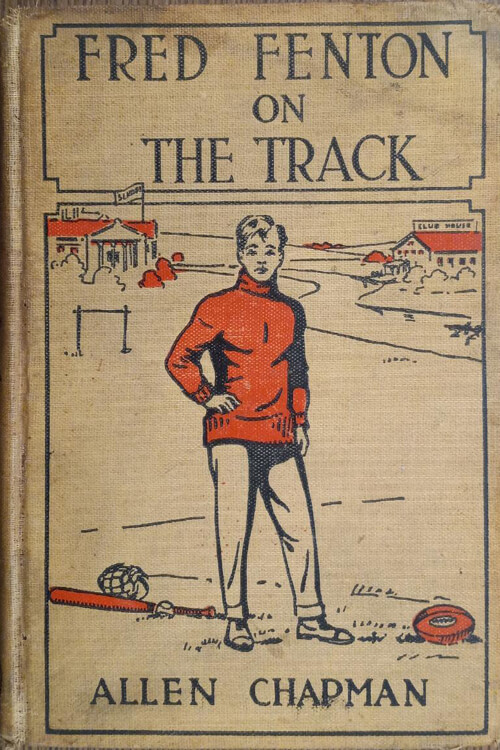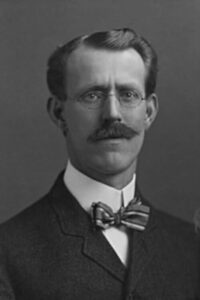
Fred Fenton on the Track
A certain man, Hiram Masterson by name, who had been in Alaska for years, and who had come back to the States to visit an uncle, Sparks Lemington, living in Riverport, had at first been inclined to side with the syndicate. Later on, he changed his mind and determined to give evidence for the Fentons which would, in all probability, cause the claim to be handed over to them.
How this change came about in the mind of Hiram Masterson, through an obligation which he found himself under to Fred Fenton, has already been told at length in the first volume of this series, called: “Fred Fenton, the Pitcher; Or, The Rivals of Riverport School.”
Then it turned out that Hiram suddenly and mysteriously disappeared; and those who were so deeply interested in his remaining in Riverport learned that he had been carried off by agents of the rich association of mine owners, of whom Sparks Lemington was one. How the search for the missing witness was carried on, as well as an account of interesting matters connected with the football struggles in the three towns bordering the Mohunk, will be found in the second book in the series, entitled “Fred Fenton in the Line; Or, The Football Boys of Riverport School.”
Once again when hope ran high in the breasts of the Fentons they were doomed to disappointment, and long waiting. A brief letter was received from Hiram, written from Hong Kong, telling them that he was on the way home by slow stages, and would doubtless appear under another name, to avoid recognition by his uncle, Sparks Lemington. What new expectations this letter raised in the humble Fenton home; together with the story of the boat races on the Mohunk, has been related at length in the third volume, just preceding this, and issued under the name of “Fred Fenton on the Crew; Or, The Young Oarsman of Riverport School.”
But now several months had passed, and as yet Hiram had not come. This was telling heavily on Fred, who counted the days as they dragged past and kept wondering if, after all, the missing witness had died abroad, and they would never get the benefit of his evidence.
Read or download Book
Allen Chapman
“Allen Chapman” began as a pseudonym for stories written by Edward Stratemeyer and evolved into a pen name for several Stratemeyer Syndicate series.
Edward L. Stratemeyer (October 4, 1862 – May 10, 1930) was an American publisher, writer of children’s fiction, and founder of the Stratemeyer Syndicate. He was one of the most prolific writers in the world, producing more than 1,300 books himself, and selling more than 500 million copies. He also created many well-known fictional book series for juveniles, including The Rover Boys, The Bobbsey Twins, Tom Swift, The Hardy Boys, and Nancy Drew series, many of which sold millions of copies and remain in publication. On Stratemeyer’s legacy, Fortune wrote: “As oil had its Rockefeller, literature had its Stratemeyer.”
Early life
Stratemeyer was born the youngest of six children in Elizabeth, New Jersey, to Henry Julius Stratemeyer, a tobacconist, and Anna Siegel. They were both from Hanover, Germany, immigrating to the United States in 1837. Although they were German, he and his siblings were educated in English and spoke English to each other.
Growing up, Edward read the likes of Horatio Alger and William T. Adams, writers who penned beloved rags-to-riches tales of the hardworking young American. These stories greatly influenced him. As a teenager, Stratemeyer operated his printing press in the basement of his father’s tobacco shop, distributing flyers and pamphlets among his friends and family. These included stories called The Newsboy’s Adventure and The Tale of a Lumberman. After he graduated from high school, he went to work in his father’s store. It wasn’t until the age of 26 in 1888 that Stratemeyer sold his first story, Victor Horton’s Idea, to the popular children’s magazine Golden Days for $76—over six times the average weekly paycheck at the time.
Career
Stratemeyer moved to Newark, New Jersey, in 1890 and opened a paper store. He ran his shop while continuing to write stories under pseudonyms. He was able to write for many genres including detective dime novels, westerns, and serials that ran in newspapers. In 1893, Stratemeyer hired the popular dime-novel writer Gilbert Patten, according to Patten’s autobiography, Frank Merriwell’s ‘Father’: An Autobiography by Gilbert Patten (Burt L. Standish) (U OK Press 1964). Patten writes that he did not like Stratemeyer. (A less-reliable source says that Stratemeyer was hired by Patten to write as an editor for the Street & Smith publication Good News. In 1894, he published his first full-length book, Richard Dare’s Venture, which was the first in his Bound to Succeed series. It contained autobiographical content and was similar to Alger’s rags-to-riches story formula.
In 1899, Horatio Alger wrote Stratemeyer as editor of the Good News, asking him to finish one of his manuscripts. Alger was in poor health at the time. When Alger died later the same year, Stratemeyer continued to edit and finish several of Alger’s other books. That same year, after Alger died, Stratemeyer wrote and published The Rover Boys, which became a tremendously popular series in the vein of the classic dime novel. The Rover Boys was described as “The first highly successful series by Edward Stratemeyer; each volume had a preface from Edward Stratemeyer himself, thanking his readers and touting the other books. It’s generally accepted that Stratemeyer wrote all of the books.” He said this series was his personal favorite. Stratemeyer formed the Stratemeyer Syndicate in 1905 and hired journalists to write stories based on his ideas. He paid them a flat rate for each book and kept the copyrights to the novels.
Personal life
Stratemeyer married Magdalena Van Camp, the daughter of a Newark businessman, on March 25, 1891. The couple had two daughters: Harriet Stratemeyer Adams (1892–1982) and Edna C. Squier (1895–1974), both of whom would later take over the future Stratemeyer Syndicate. Stratemeyer enjoyed the outdoors and often took annual summer trips to the Great Lakes, Lake George, and Lake Champlain with his family. They traveled as far as the West Coast and Yosemite. A humble man, he never sought public attention and preferred living a private and quiet life with his family at their home on N. 7th Street in the Roseville section of Newark. His relationships with his daughters were described as “warm”, and his daughter Harriet recalled that it was a lively atmosphere growing up. Stratemeyer was a member of the Roseville Athletic Club and the New Jersey Historical Association. Stratemeyer died at age 67 in Newark, New Jersey on May 10, 1930, of lobar pneumonia and was buried in Evergreen Cemetery in Hillside, New Jersey. On May 12, 1930, two days after his death, the New York Times reported that his Rover Boys series “had sales exceeding 5,000,000 copies”.






